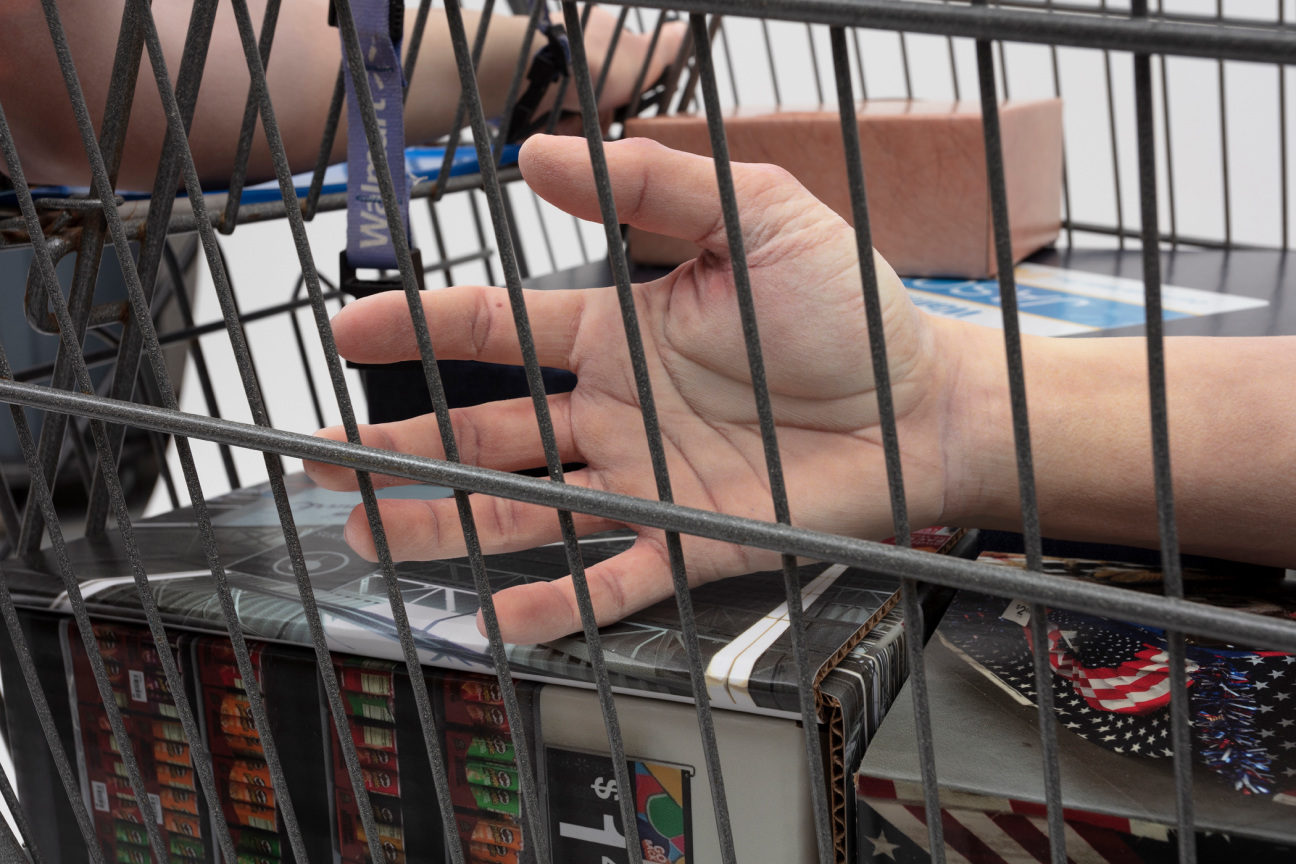
At the Whitney Museum of American Art’s opening of “Josh Kline: Project for a New American Century,” a friend introduced me to a guy about my age. We got to talking, and he told me that he was an artist (no surprise) but that he was also an art handler. His most recent job had been installing Kline’s exhibition. The guy gestured down toward the floor we were standing on, which was plastered with T-shirts and denim, suggesting that he’d had a hand in placing them there.
For a minute I considered asking him whether he was actually part of the exhibition, which showcases over a decade of Josh Kline’s sculptures, videos, and installations, all rife with references to labor and class. Across two floors of the Whitney, viewers will find 11 exhibition spaces with names like “Blue Collars” and “Unemployment.” Kline, who’s been living in New York for most of the 21st century, has long deployed, combined, and mutated the aesthetics of the fashion show and the FEMA tent, the cop car and the corporate uniform, the iPhone and the surveillance drone—showing the ways in which cultural and political forces intertwine to produce the class conditions of daily life.
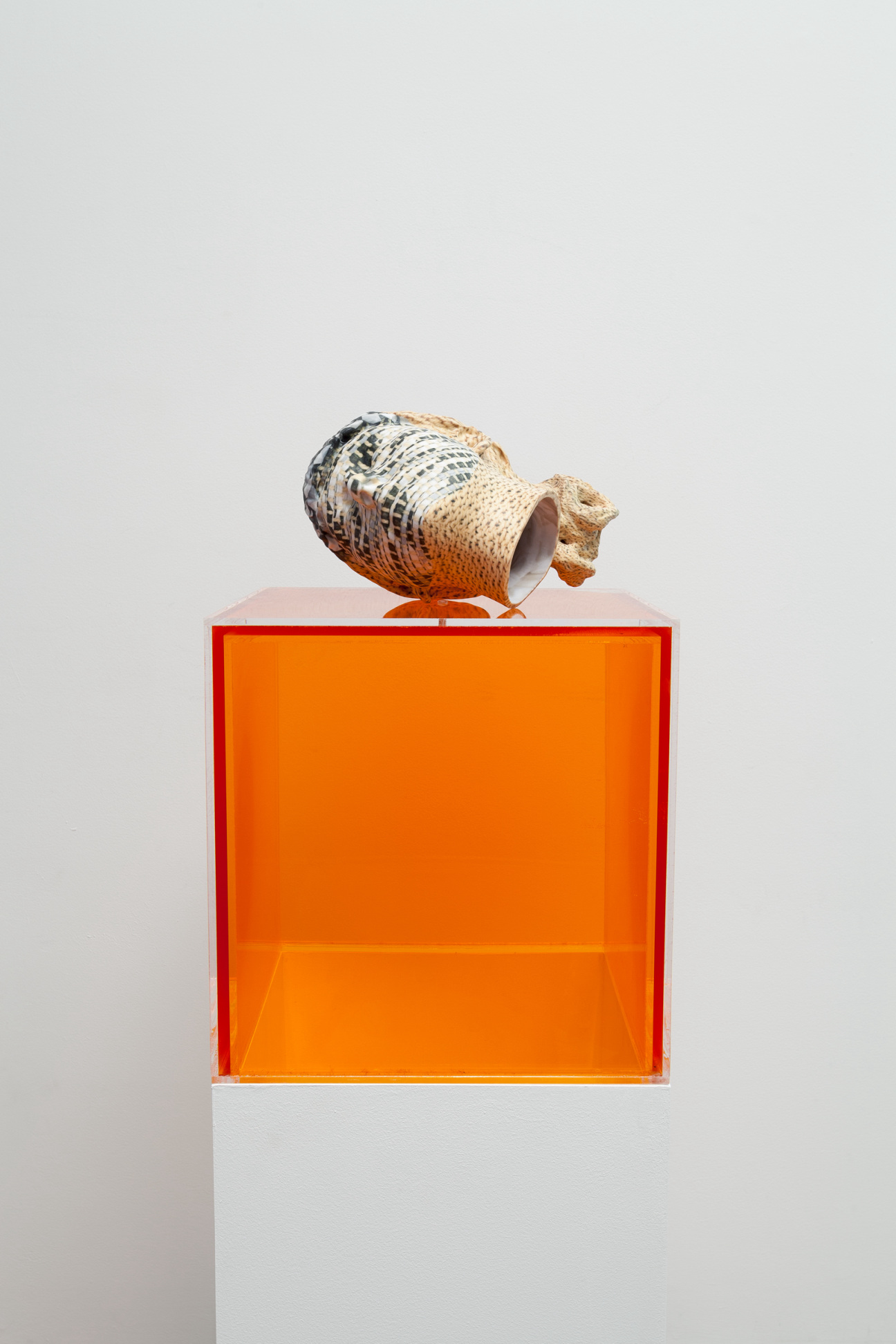
The piece beneath our feet was called Making Ends Meet, 2016, and the label listed its materials as: “generic middle-class clothing, fabric, and thread.” Looking around the room, I saw people wearing the usual art world Vitamix blend of various collars: generic middle-class clothing, Prada, and Eckhaus Latta. We walked into another room, where a wall was padded with Patagonia puffers, like a mental institution for outdoorsy FiDi types. Another space hosted 3D-prints of Mike Eckhaus and Zoe Latta’s heads covered in images of their own designs. In every corner of the show, real or implied bodies were at work.
I called Kline to talk about this wildly smart, darkly funny, visceral, and vast exhibition. It’s a retrospective of sorts, but it’s also an arrow toward the heart of the future, directing our gaze where it needs to go, which might be toward the floor underneath us.
Elvia Wilk: I’m thinking about the idea of “newness” in your work. The Whitney show is called “Project for a New American Century,” which implies that we’re on the verge of something. There’s something funny and clever about referencing the “new” in a mid-career retrospective. Is there such a thing as newness?
Josh Kline: I am very critical of newness for the sake of newness. I think everyone understands at this point that it has an integral function within capitalism. But in another sense, I think newness is very important. When you live in a society that has a deeply problematic history like the United States, it keeps us from being trapped in a toxic culture from the past.
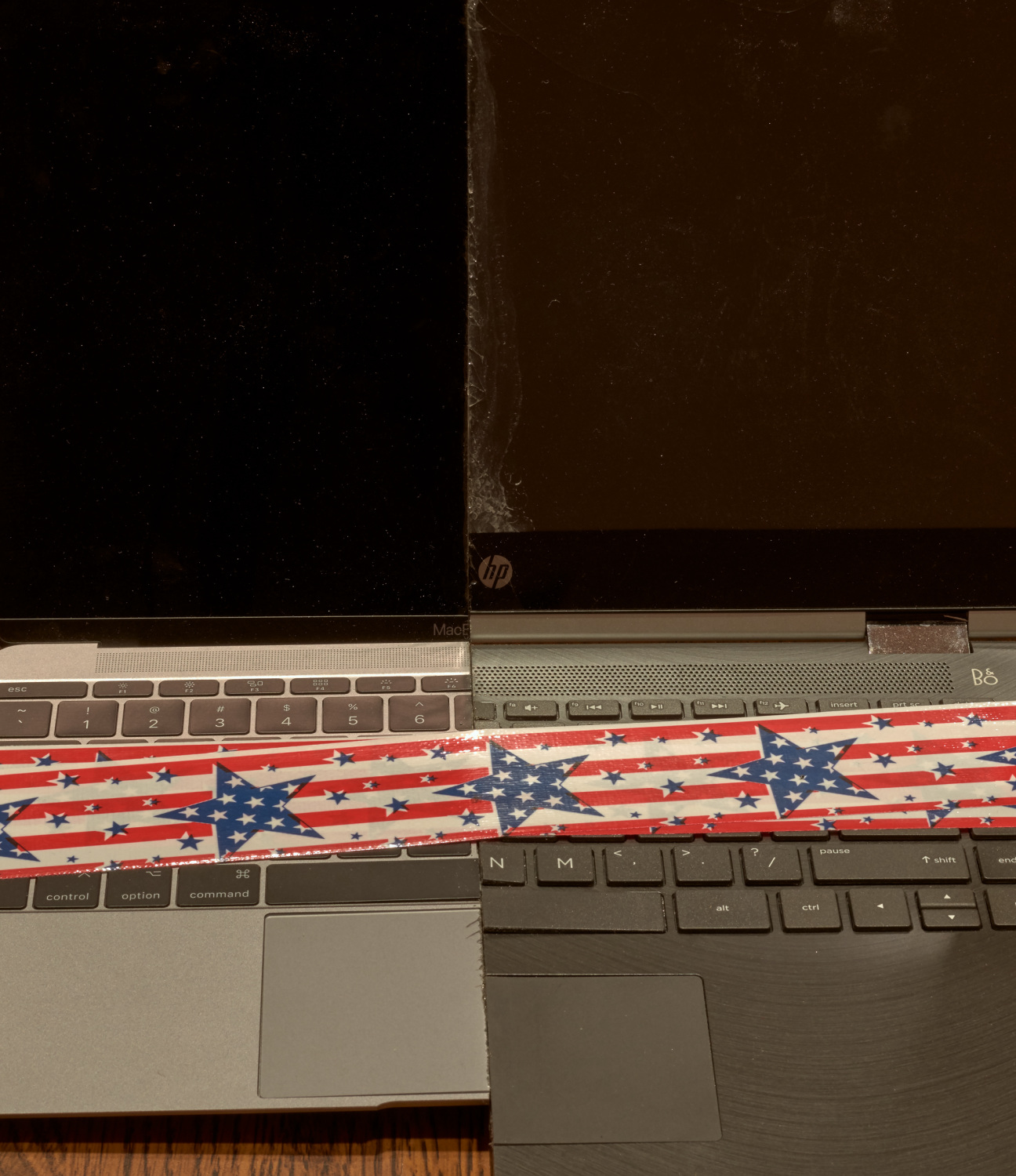
Wilk: I think it cuts both ways. Newness implies that real change is possible—that we could do something different—but it’s also a marketing tactic to sell the same thing again and again in new packaging. This reminds me of your [Barack] Obama piece from 2015, Hope and Change. You hired an actor to recreate Obama’s inaugural speech, but he gives us a vision of radical change instead of the platitudes he delivered in reality.
Kline: That piece was about the possibility that Obama represented, and that so many of us believed in in 2008. He offered America a vision of a radically transformed country, but after he was elected, it seemed like he didn’t really believe in it.
Wilk: Just yesterday I was talking about the “Yes We Can” slogan and how cringy and painful it is to think back to that time. Who was that “we” supposed to be? Was there a problem in that false collectivity?
Kline: The “we” could have been powerful. Obama's potential was that he offered a narrative that really different groups in America could subscribe to. I think the issue is like, Yes we can do what? A lot of people thought, Yes we can reinvent America. We can create a new America that's more just or that fulfills more people's needs. And for him, it was, Yes we can elect Barack Obama.
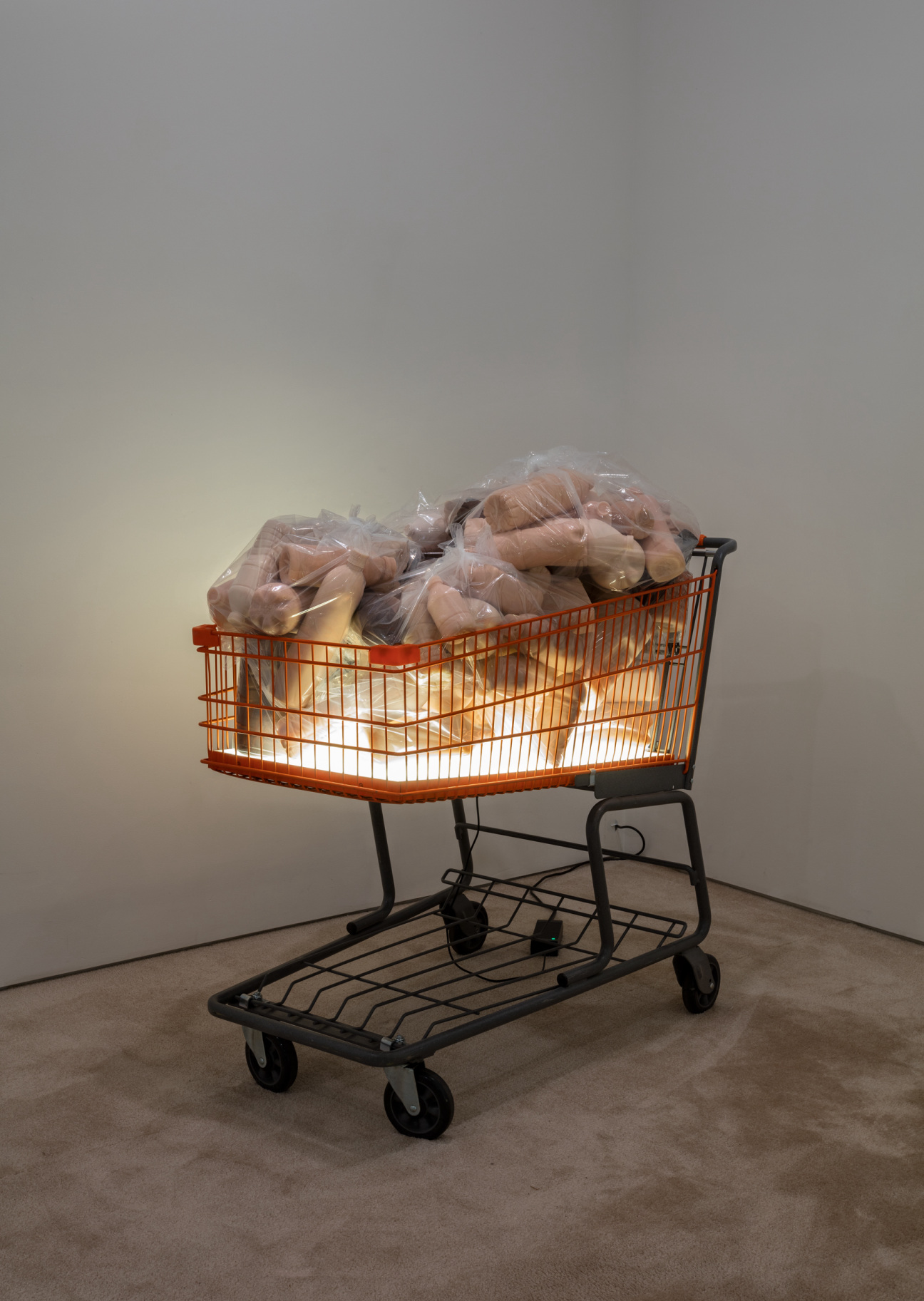
Wilk: Thinking about who “we” are, I found an unexpected element of body horror in your show when I saw all the works together. With the body bags—life-sized replicas of workers who are tied up in transparent plastic bags, like Wrapping Things Up (Tom/Administrator), 2016—you give us the name and occupation of the person it’s based on. There are also the shopping carts with pieces of cut-up bodies in them, like Unavoidable Victims, 2016. It’s like bloodless body horror. It’s not splatter, it’s not gross, but it’s even scarier that way.
Kline: I was thinking about it in terms of the objectification of human beings and the transformation of people into products. The blood and suffering is all hidden; you're presented with somebody in a uniform delivering you a package, but you don't know what they're going through. I love David Cronenberg, but I would say the horror of working for FedEx—or the horror of losing your job in a country like America with no social safety net—is far scarier than a chest-bursting sci-fi fantasy. It's really more about capitalism turning people into disposable products.
Wilk: It’s not Cronenberg; it’s an Amazon warehouse where you're not allowed to have a body, to have a bathroom break. That intense denial of the bloody viscera does produce in me a sense of contemporary body horror.
Kline: There will be even more body horror while the show is up. There are bacteria dispensers in the room with the Patagonia wall. If you come back in a month even, those will be squeamishly upsetting. Also the melting wax sculptures (Consumer Fragility Meltdown, 2019)… And there's literally blood in the show, it’s just hidden inside plastic coolers (Internal Disinformation, 2013/2020). There are IV bags inside them, literally pig’s blood doped with bleach and Ivermectin. You would need one of the guards to open them up to see it.
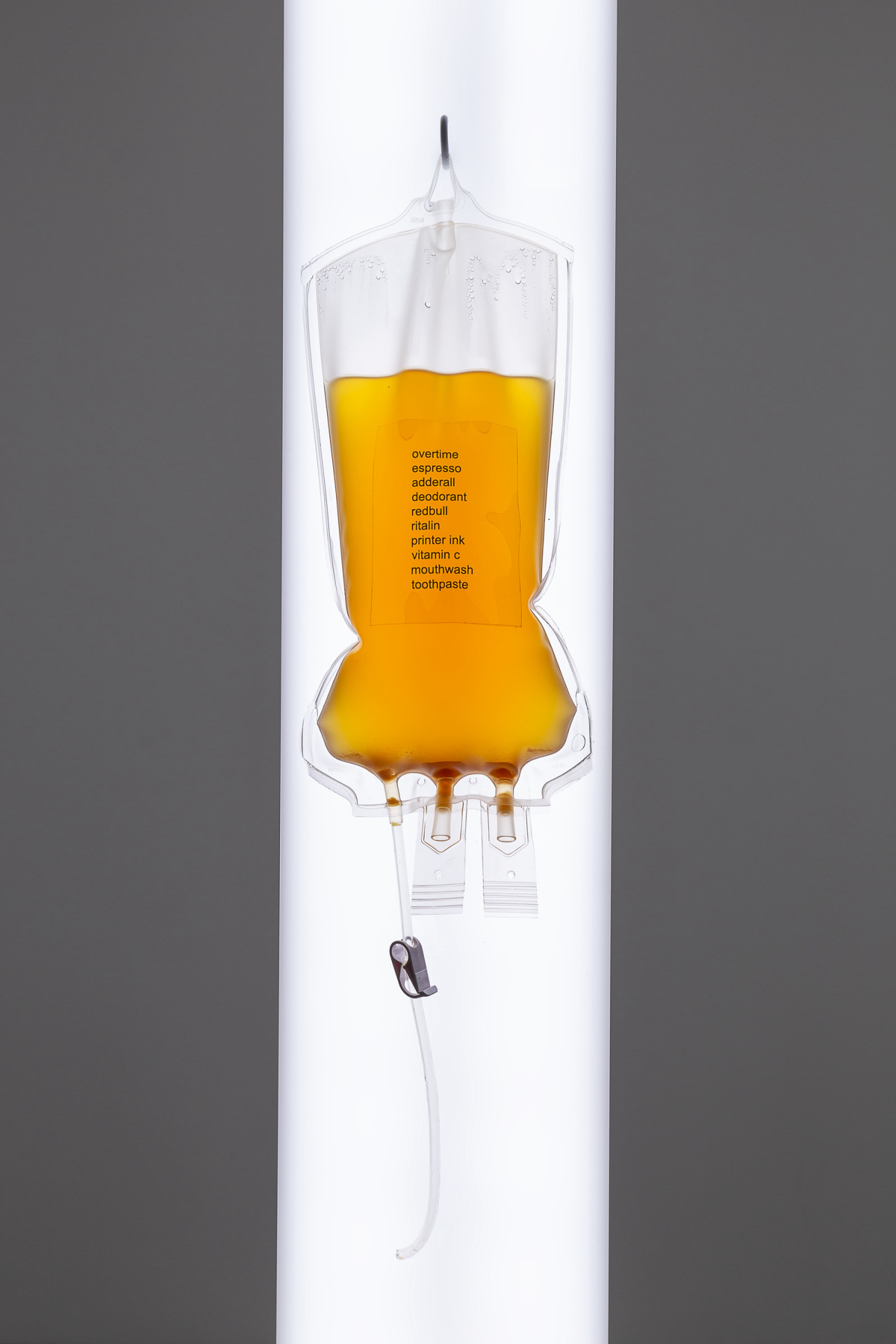
Wilk: A lot of the works are super contained and sanitized, in bags or boxes or coolers, but there's something grotesque happening beyond the surface. I'm calling you from a conference room in a Brooklyn coworking space, and I’m always like, What kind of horror is happening in the Zoom rooms that I can’t see? Whenever I come here I end up drinking one of those corporate MCT-oil Ashwagandha shakes for breakfast. There's a certain kind of stressful work day where I buy that product, which makes me think of your IV bags filled with Adderall, Red Bull, and deodorant (like Overtime Drip, 2013/2020). Everyone here would probably use an IV bag full of stimulants for lunch if they could.
Kline: You’re in that zone from your book Oval. You think a lot about the optimization of the body and mind in your world too.
Wilk: That book was about a fictional drug, but the actual pharma on the market is wild. I’m fascinated by what the U.S. thinks should be medicated. Did you know you can be diagnosed with shift work disorder? Anybody would be sick working 12-hour shifts at night, so to put that in the DSM and prescribe people a stimulant drug for it…
Kline: Yeah, these metaphors that our society has been promoting since the industrial revolution are a real problem. They're like, The brain is a steam engine. The brain is a computer. The brain is a television. The brain is not a machine! The human body is not a machine! It’s a bunch of wet muscle, fat, and sinew. We have more in common with cats than we do with smartphones, and yet it’s a crime to get sleepy after you eat lunch.
Wilk: Health and wellness is either about ridding yourself of your filth or reintroducing natural pathogens. Hand sanitizer and probiotics are flip-sides of the same coin.
Kline: Whereas the real problem is the fact that we're filling our bodies with plastic.

Wilk: I was really glad to see your drowned New York video Adaptation, 2019-2022, again. There’s a Ballardian vibe to it, but watching it in the context of your show, with the new installation of tents that look like homes for climate refugees, it’s definitely a piece for the extinction era. Has the resonance of that movie changed for you over the last couple of years?
Kline: It was never just about the beauty of a drowned world. It was about the fact that this is something that we're gonna live through, a kind of nostalgia for our present through the eyes of the future. I shot it right before the pandemic, and the piece changed when I edited it during lockdown. I’ve really come to see the pandemic as a dry run for what we’re going to go through with the climate crisis.
Wilk: I thought the Whitney show told a really nicely choreographed story. There were two narrative strands for me: the lives of these worker characters in the body bags and in some of the videos, and this meta-narrative of the U.S. and the politician characters who have occupied the political landscape over the past decade and a half.
Kline: It's kind of a portrait of present society and a potential future society. On the eighth floor, you've got the Bush administration apologizing with Crying Games, 2015—this political fantasy of remorse—and then you have these people who will continue to be shaped by their policies. I think a lot about what might have happened if [George] Bush hadn't become president, and the repercussions will affect this country for a very long time.
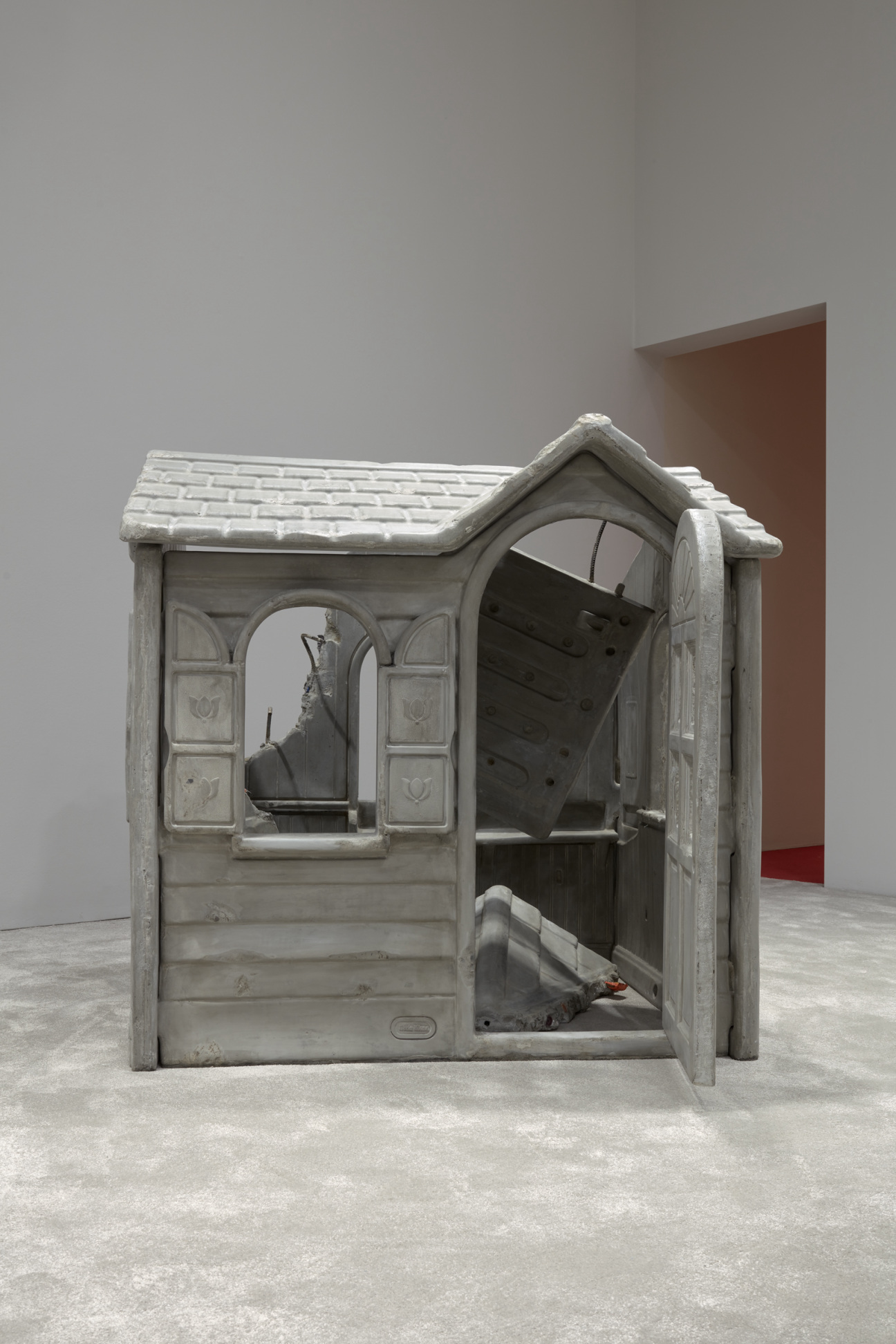
Wilk: I spent most of my 20s in Berlin, which is where I saw your work first and read it in that context. But now, living in New York, the resonance of the work has changed for me a little bit. It’s so about this place. Can you parse the New York-ness of your work?
Kline: I've lived in New York for almost 21 years now. It's hard for this work not to be insanely rooted in this place, but I also lean into it because New York is a major node in the global financial system. It's an interesting vantage point from which to examine our time, especially given how fucked up America is after these four decades of neoliberal policy. New York is a place of extreme income inequality; there's no real social safety net here. But it's also this place that's romanticized because of the artists, musicians, designers, and thinkers that live here, who are, in many ways, sucking at the teat of the financial system whether they want to acknowledge it or not.
I’ve been thinking about what it would be like if I lived somewhere else. There was a moment in the pandemic where I thought I should move to Berlin because America is becoming a scary fascist country. And I was wondering what that would do. Would it disconnect me too much from this—the forces shaping our world?
"Josh Kline: Project for a New American Century" is on view through August 13, 2023 at the Whitney Museum of American Art in New York.










 in your life?
in your life?

